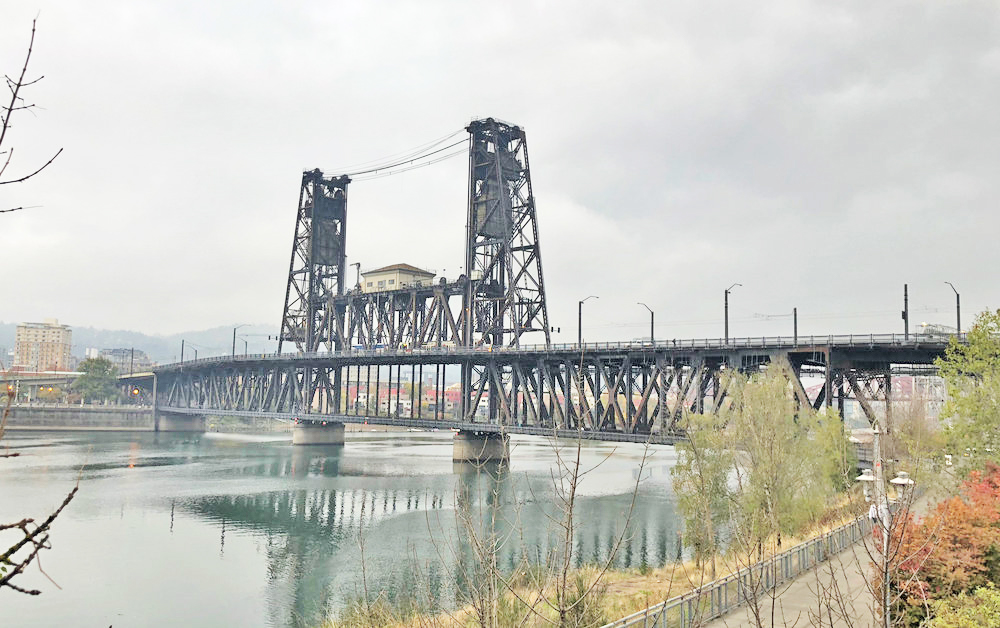Portland was the official gateway to most of my childhood road trips—from Seattle to San Diego—a dour landmark that confirmed our family’s vacations were officially non-refundable.
Passing by the city, there was no sweeping skyline to greet us. I thought Portland had always lacked a stunning skyline, the dramatic, jutting structures of a traditionally dynamic silhouette. From faraway, the city’s profile seems to have been intentionally cluttered with mediocre architecture, dissuading fun-seekers and joy-trippers to a more glamorous San Francisco, say. Or, better yet, Los Angeles.
Anyone looking to be readily impressed by a city would have to look a little harder.
Portland is cut-through by the Willamette River. Interstate-5 runs parallel to the river, so that a drive North or South is a carousel past the bridges that staple together the city’s dueling banks. All the bridges look very old and rickety. The oldest and ricketiest of these was the Steel Bridge.
A seeming holdout from Portland’s frontier days, the tar-caked Steel Bridge appears, paradoxically, both lethally brittle and indestructible. It is a tetanus playground. A tangle of rusty trusses and railroad tracks that shudder like a drawer full of cutlery when trains clamor over it’s rickshaw rails. To accommodate the ships waddling into town, the bridge’s lower quarters are simply hoisted up two thick legs, as if to hike a squat dress, to allow the boats to pass underneath.
It wasn’t until my first ride through Portland, with a friend, that I became overwhelmed by the rotten beauty of the Steel Bridge. We were riding along the pedestrian path. In a gushy, foolish moment, I pulled up next to her, to swoon over the bridge when a bicyclist behind us swore at us for riding side by side and taking up the whole pedestrian path.
I was in love.






